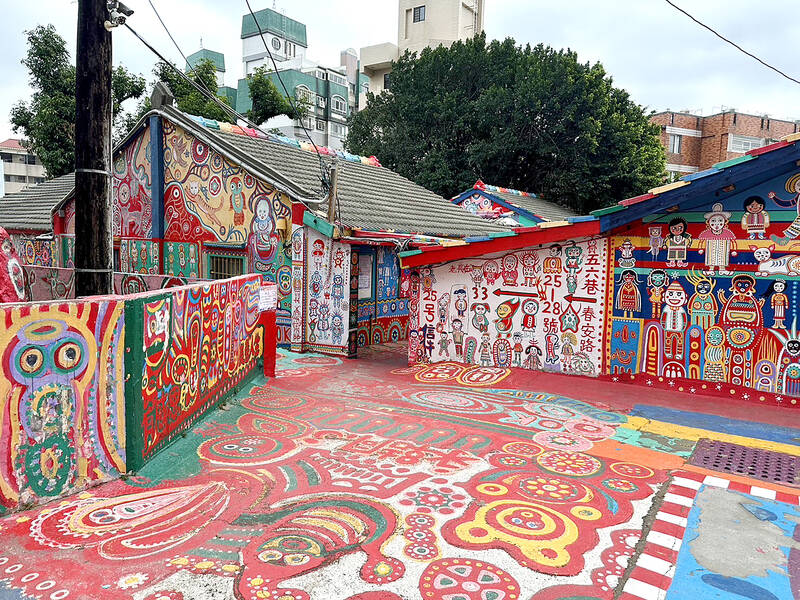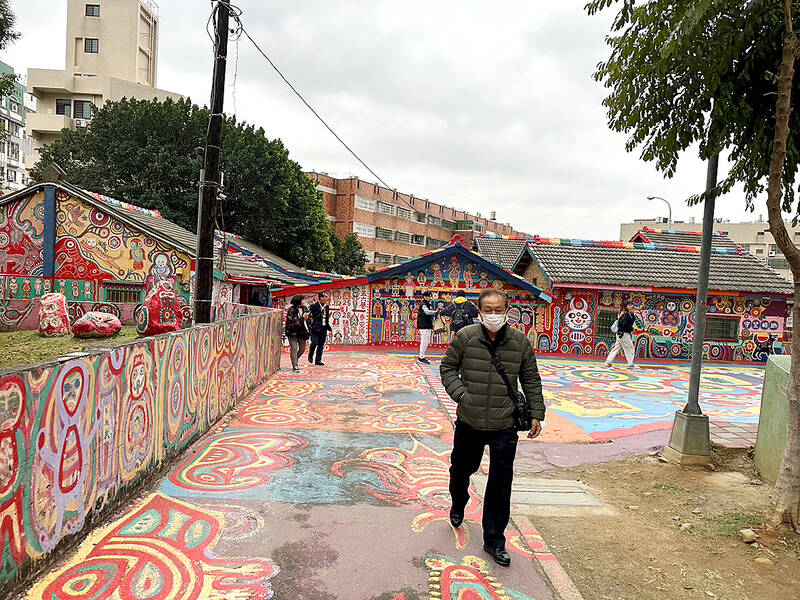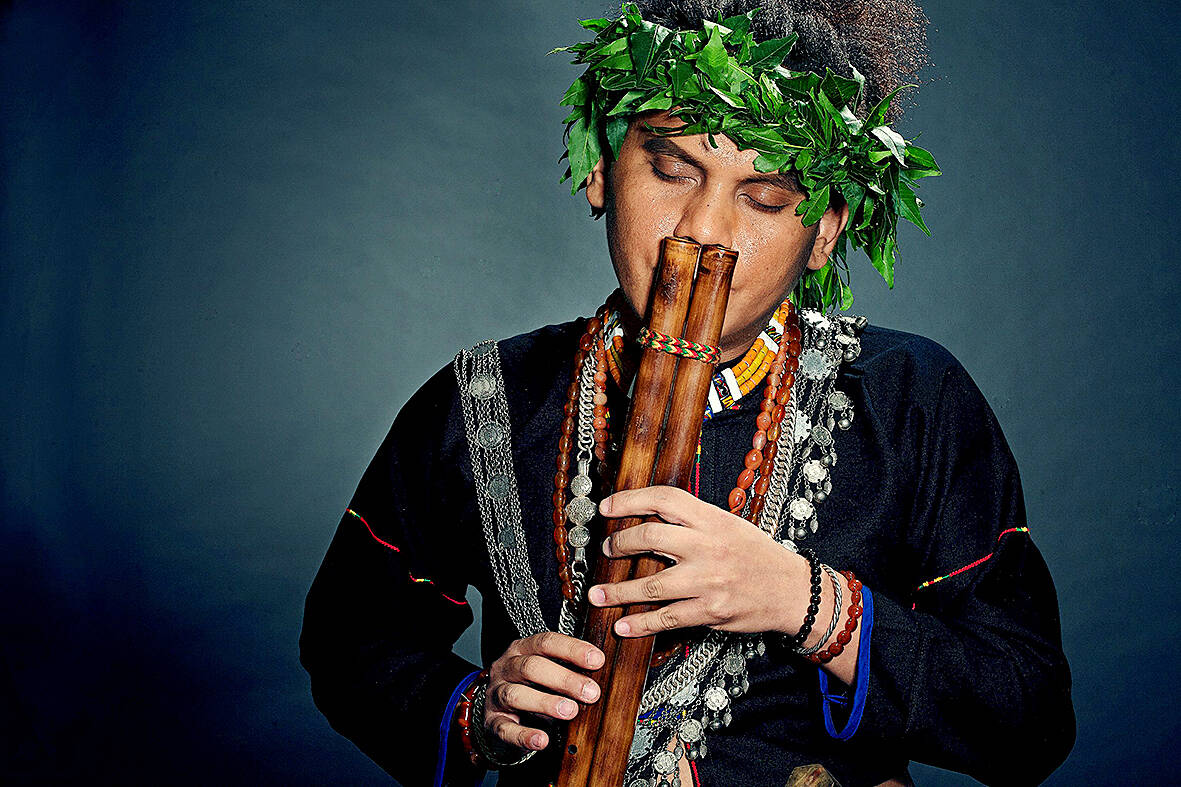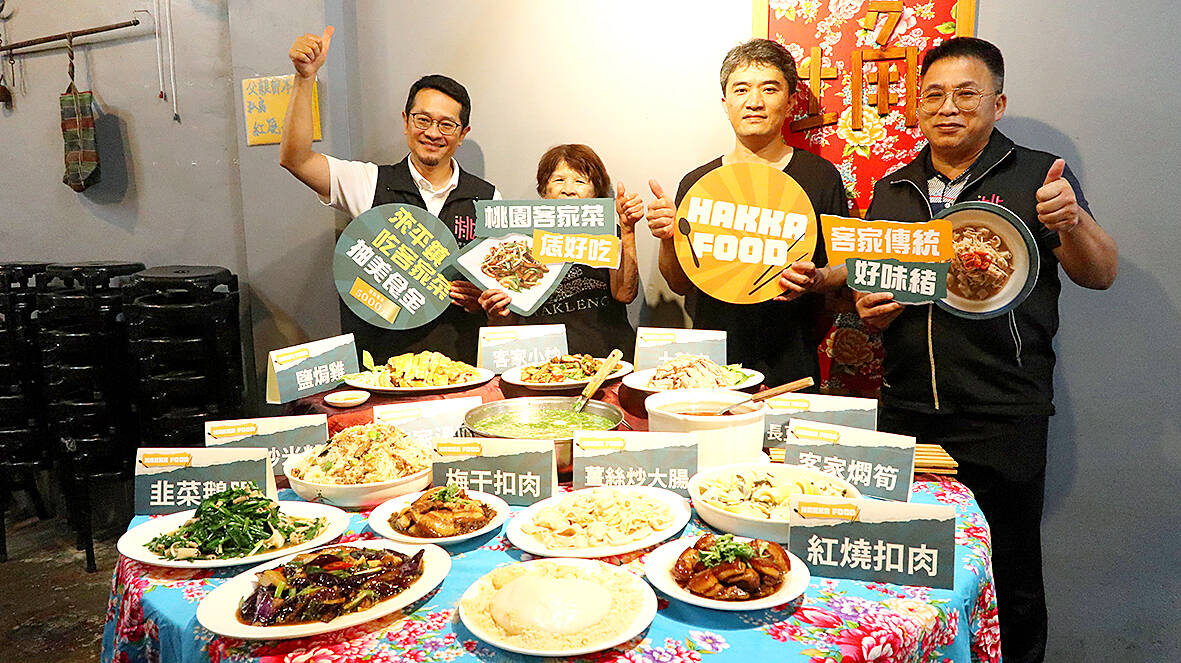William Lai’s (賴清德) speech to the Democratic Progressive Party (DPP) National Congress last month has been attracting attention, especially from the Chinese Communist Party (CCP) and China’s Taiwan Affairs Office of the State Council (TAO). The Chinese Nationalist Party’s (KMT) deep blue pro-China unification wing are also apoplectic.
Lai’s speech touched on issues of Taiwanese nationality and identity, and vision for the future that he expects the (DPP) to take the lead. Meanwhile, at around the same time, his administration announced plans for a change in national linguistic self-identity.
The two moves are almost certainly connected. One is the Ministry of Education (MOE) announcing plans to change the labelling on language teaching materials from “Southern Min” (閩南語) to “Taiwan Taiwanese” (台灣台語). The other is Lai’s decision to give his entire speech at the DPP National Congress in “Taiwan Taiwanese.”

Photo courtesy of reader
‘TAIWAN TAIWANESE’ IN TAIWAN’S POLITICS
Lai’s choice is interesting and something that is not often done in formal political settings like this, though sometimes it is used to convey messaging at political rallies. For example, Terry Gou (郭台銘), whose family fled the Chinese Civil War, delivered speeches in Taiwanese before he dropped out of the 2020 presidential race.
Former President Tsai Ing-wen (蔡英文) delivered her speeches in Mandarin, though sometimes with some Taiwanese peppered in, which is more common practice. Mandarin is the most widely spoken language in the country and is usually understood by speakers of Taiwanese, Hakka, indigenous peoples and is usually the language learned by “new immigrants.”

Photo courtesy of reader
Lai was taking some political risks in his language choice. On one hand, it is quite likely that younger audience members and some older ones couldn’t understand his speech. The other is that traditionally the party has been dominated by Taiwanese speakers and distrusted by those who came to Taiwan from China after the Chinese Civil War, Hakka and indigenous peoples.
Mainlanders traditionally distrusted the DPP because they identified as Chinese, while Hakka and indigenous peoples had historically suffered at the hands of the numerically superior Taiwanese-speaking peoples who originated in Fujian. Tsai had actively tried to court those groups and de-emphasize any link to any specific group, with some success. For example, the DPP went from zero indigenous legislative seats to two out of six now.
Interestingly, when the DPP was founded it had a wider range of supporters pulled from the broader pro-democracy movement, but by the early 1990s Taiwan independence supporters had come to dominate the party and often brought their language with them.

Photo courtesy of the Shihsanhang Museum of Archeology
TAIWAN IS THE ‘HOMELAND’
Lai’s speech gives some clues as to why he chose to give it in Taiwanese. The first clue is in the line “Our Democratic Progressive Party was born during an era of authoritarian rule, upholding the principles of integrity, diligence and love for our homeland, standing with the people.” By “homeland” he is clearly referring to Taiwan.
His very next line is a rallying cry and reminder to the party faithful of what the KMT represented to them at the time and with an undertone suggesting that the KMT retains some of those tendencies. His line was “On one hand, we broke through martial law, lifted party bans and press restrictions, striving for 100 percent freedom of speech.”

Photo: Huang Cheng-chia, Taipei Times
Of course, that line is only accurate if former president Lee Tung-hui (李登輝) is included in the “we,” which a lot of Taiwan independence supporters now do, even though he was KMT and never a member of a party, like the DPP, that supported it. Lee was such a skilled politician that in the 1996 presidential campaign majorities of both unification with China and Taiwan independence supporters thought he was on their side. The Taiwan independence supporters turned out to be right.
Later in the speech, Lai laid out three important goals. The second one was to deepen constitutional democracy and the third was about freedom and human rights.
‘NATIONAL IDENTITY’
It was his explanation of the first “important goal” for the DPP that incensed the CCP. It also without a doubt infuriated the deep blue pro-China unification wing of the KMT. Here is what he said:
“First, establish a national identity for the bulk of Taiwanese. Our democratic predecessors shed blood and sacrificed their lives to expose the fallacy of “Taiwan as a base for counterattacking the mainland,” thereby establishing a Taiwan-first national policy.”
“Now, our responsibility is to unite the people, resist annexation and ensure national sovereignty. We must do everything we can to help all citizens understand Taiwan’s unique history and culture, fostering a national identity where the 23 million people living in Taiwan are a community of shared destiny. We must consolidate every strength so that national identity ceases to be a point of external division and internal conflict, but rather a force that unites our people.”
Taken sentence-by-sentence there is nothing particularly new and could have been said by the normally cautious former president Tsai. It is what it says when all put together and underscored by speaking in Taiwanese that makes this so dramatic.
Instead of focusing on the name of the country, he is laying out a vision of Taiwan as a united nation and the Taiwanese people sharing a united identity. Tsai would have tiptoed around this, preferring not to antagonize mainlanders and other groups who might disagree.
TAIWANESE IDENTITY REIMAGINED
Though elements of this go back to Lee Tung-hui’s vision of an inclusive “New Taiwanese” identity that blurred ethnic lines, fundamentally this is more of a post-Sunflower movement vision for the future than the earlier Taiwan independence era.
During the Sunflower movement, a protest against a KMT proposed trade pact with China, ethnic lines mattered little. It was a pro-Taiwan movement across the board, supported by mainlanders, Taiwanese speakers, Hakka and indigenous alike. While self-identifying as “Taiwanese only” continued to grow more or less on the previous trendline post-Sunflower, the truly important legacy was that Taiwanese self-identity deepened significantly.
Though it started to appear before the movement, interest in local history and what makes Taiwan unique picked up significantly. Taiwanese started taking noticeably more pride in all things Taiwanese, including indigenous culture, traditional Hakka and Taiwanese-speaking culture, and even the culture of the military villages that the KMT built to house their vast army imported from China. Taiwanese traditions became cool, and continue to be to this day.
Another important pillar in Lai’s vision is that among younger generations and now even into middle age, among ethnic Han it is impossible to determine whether a person’s ancestors arrived hundreds of years ago from Fujian or Guangdong, or after the Chinese Civil War. That did not used to be the case.
Not only were the accents of even the second or third generation of mainlanders different, they carried themselves differently. They were far more confident and tended to speak more directly, whereas Taiwanese-speakers, Hakka and indigenous peoples tended to talk in circles and keep their heads down more.
This was due to the entire system was rigged for them after the KMT arrived. They got the best education, the best jobs and the most opportunities in government, military, media, academia and the largely state-owned economy of the era. This started to change when the countless small and medium enterprises that popped up in the 1970s and 1980s on farmland owned by Taiwanese-speakers and Hakka allowed parents more educational opportunities for their children. Democratization sped up the process further, and openly favoring mainlanders was no longer acceptable.
With the older generations, where differences between the groups was fading, it is now quite possible to envision a future where everyone is simply “Taiwanese.”
When I arrived in Taiwan it was made clear I would always be different and could never be “Chinese” or “Taiwanese” because they were racial identities. Now, people are often surprised I do not have citizenship. “Taiwanese” is now a cultural identity, not in the blood for many younger Taiwanese.
For generations under successive colonizers indigenous peoples often hid their identities for fear of discrimination, but today many are proudly reclaiming their heritage, identity and some are working to revive or reinvigorate their languages. It is cool now.
This reimagined and yet reinvigorated with traditional Taiwanese cultures Taiwanese identity is what Lai wants to double down on to further the identity of the nation itself and clearly distinct from China. In other words, Taiwan independence.
Lai is being more direct about how he intends to go about it than Tsai was, though like Tsai he does not yet appear to have any intention to change the national name or constitution. He is less direct than former president Chen Shui-bian (陳水扁) could be at times and certainly will not follow Chen’s quixotic quest to join the UN, but Lai probably has a more comprehensive and viable path forward to national unity.
Head’s up, expect more curriculum changes from the Ministry of Education. Coming up in another column we will examine that issue, and how “de-Sinicization” terrifies the CCP.
Donovan’s Deep Dives is a regular column by Courtney Donovan Smith (石東文) who writes in-depth analysis on everything about Taiwan’s political scene and geopolitics. Donovan is also the central Taiwan correspondent at ICRT FM100 Radio News, co-publisher of Compass Magazine, co-founder Taiwan Report (report.tw) and former chair of the Taichung American Chamber of Commerce. Follow him on X: @donovan_smith.

On April 26, The Lancet published a letter from two doctors at Taichung-based China Medical University Hospital (CMUH) warning that “Taiwan’s Health Care System is on the Brink of Collapse.” The authors said that “Years of policy inaction and mismanagement of resources have led to the National Health Insurance system operating under unsustainable conditions.” The pushback was immediate. Errors in the paper were quickly identified and publicized, to discredit the authors (the hospital apologized). CNA reported that CMUH said the letter described Taiwan in 2021 as having 62 nurses per 10,000 people, when the correct number was 78 nurses per 10,000

As we live longer, our risk of cognitive impairment is increasing. How can we delay the onset of symptoms? Do we have to give up every indulgence or can small changes make a difference? We asked neurologists for tips on how to keep our brains healthy for life. TAKE CARE OF YOUR HEALTH “All of the sensible things that apply to bodily health apply to brain health,” says Suzanne O’Sullivan, a consultant in neurology at the National Hospital for Neurology and Neurosurgery in London, and the author of The Age of Diagnosis. “When you’re 20, you can get away with absolute

May 5 to May 11 What started out as friction between Taiwanese students at Taichung First High School and a Japanese head cook escalated dramatically over the first two weeks of May 1927. It began on April 30 when the cook’s wife knew that lotus starch used in that night’s dinner had rat feces in it, but failed to inform staff until the meal was already prepared. The students believed that her silence was intentional, and filed a complaint. The school’s Japanese administrators sided with the cook’s family, dismissing the students as troublemakers and clamping down on their freedoms — with

As Donald Trump’s executive order in March led to the shuttering of Voice of America (VOA) — the global broadcaster whose roots date back to the fight against Nazi propaganda — he quickly attracted support from figures not used to aligning themselves with any US administration. Trump had ordered the US Agency for Global Media, the federal agency that funds VOA and other groups promoting independent journalism overseas, to be “eliminated to the maximum extent consistent with applicable law.” The decision suddenly halted programming in 49 languages to more than 425 million people. In Moscow, Margarita Simonyan, the hardline editor-in-chief of the